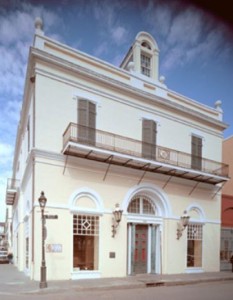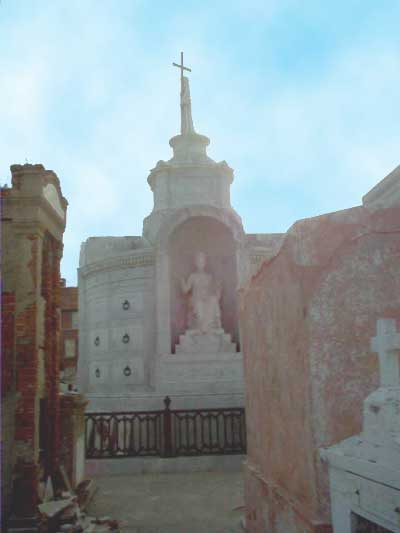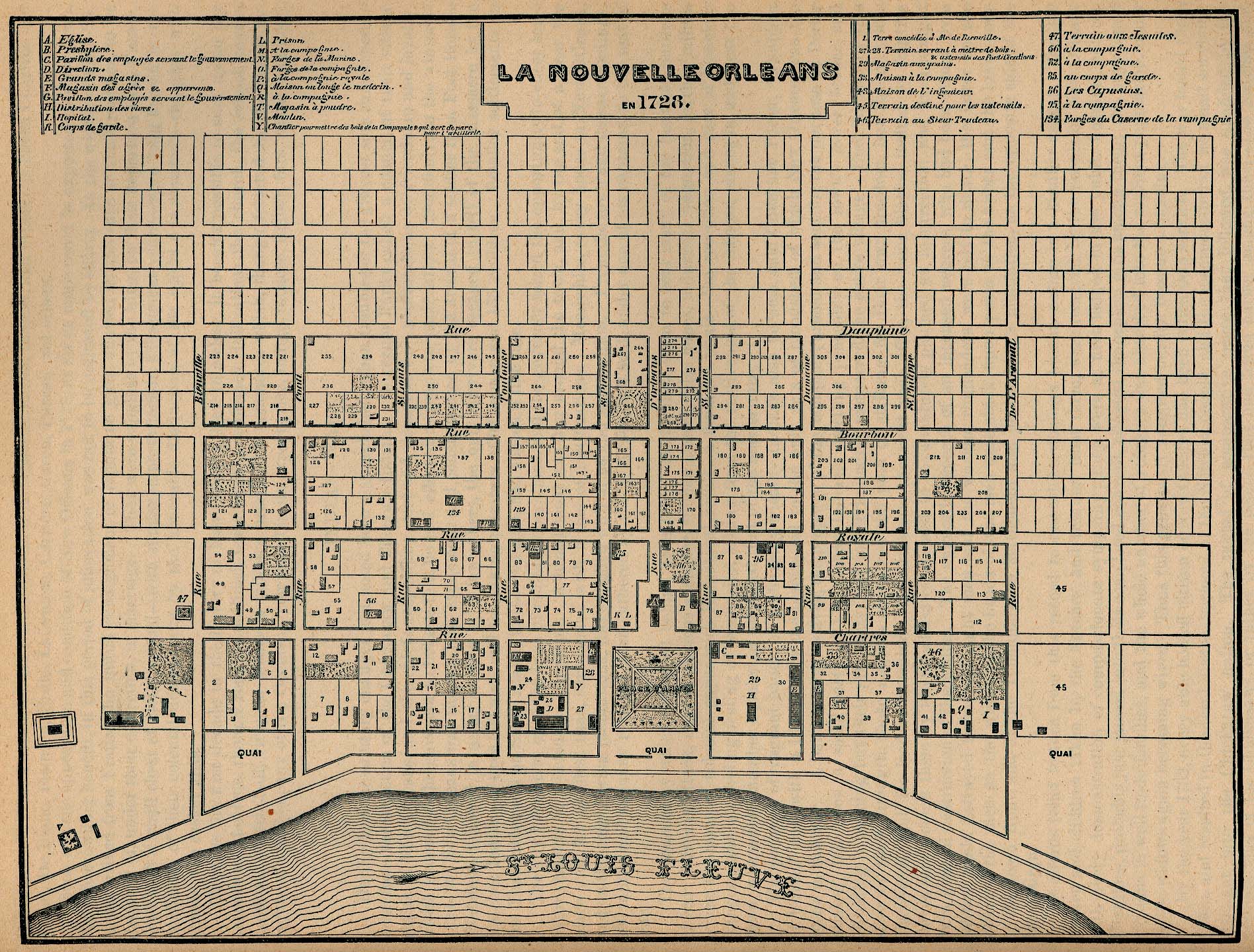Wednesday, June 27, 2012
Tuesday, June 26, 2012
New Orleans Trip Part II. The French Quarter: Like a rubber stamp that says " I just need one more chance"
Ahh the French Quarter, the backdrop of a hundred thousand mistakes
and regrets. Stories of love, passion, revenge, salvation, murder, God,
magic, monsters and everything in between, they all seem to play out so
well on this unique background. It's no wonder that this particular
section of New Orleans is a fountain of inspiration for artists of all
sorts, but especially writers. The two best examples of the gold the
French Quarter can produce are probably Tennessee Williams' ' A
Streetcar Named Desire' and John Kennedy Toole's 'A Confederacy of
Dunces' (we should note that a lot of the second book takes place on
Canal St., which is technically not the French Quarter but.... meh.).
I don't want to spoil either book, but 'Dunces' can be summed up as:
'Oh
Fortuna! Why hast thou spun me downward. My Boss hath told to stay out
of trouble...so a RIOT I shall start.Oohhh...nevermind there are
strippers..and birds..RIGHT HERE. This is awesome.'
While 'Desire' can be summed up thusly-
Also..you know..young Marlon Brando. You can watch him do anything. Eat a sandwich, channel surf, blink, whatever.
Anyway ARCHITECTURE.
So how does one house this passion? The best answer is uniquely.
The French quarter has it's own architectural standards that have persevered through flood, fire, famine and riot. There are a few kinds we want to touch on briefly. The first is the 'Shotgun House'. A Shotgun is thus named because, hypothetically, you can shoot a from the backdoor and the bullet should come out the front.
While extremely simple, the shotgun house ingeniously mixes function and economy. The straight row of doors allow for a quick cross ventilation of the house and is a natural fit for the linear plots of land that the original plan of the French Quarter encouraged (see previous post). You also essentially have two porches, one for the front and one for the back. I like this as a poetic interpretation of what you show to the world and what you really are.
There are several versions of this style, double shotgun, semi-detached, etc. The nicer ones have a kind of Colonial/Victorian molding which make them look like sweetest old lady in the world lives there. How can she afford it? The cute brigade pays her to have pies cooled on windowsills year round.
The next we want to cover is the Creole Townhouse
Creole townhouses are interesting because they attempt to blend Spanish and French Styles. The walls are the stucco and brightly painted colors of the Caribbean Colonies while the structure is a French post-and-brick. This technique does not rely too heavily on one material or the other, as in this climate, both can be unreliable. (Brick can sink, wood can burn). You might also notice a large number of Mansard roofs on the Creole townhouses in addition to the traditional Spanish-slate hipped. Additionally, most have a wrought iron balcony (or two depending on the exterior) that has come to be associated with much more lewd behavior than I think the original intent implies, especially on Bourbon St.
The other noticeable feature is the floor plan. On the first floor you might have a multi-use space like a shop or bar, with the apartments on top. In the greater homes, it will simply be a grand parlor for entertaining.
The interesting thing to note is how rarely the staircase is put out front and center. This is because only the closest guests are allowed upstairs. Along with the shotgun houses, we begin to see a pattern. The architecture implies a group of people who are easy to approach, but hard to know. Friendly and charming but also guarded and suspicious.
This changes when we are introduced to the "American Townhouses".
When the exotic northerners started congregating in New Orleans, they brought their northern ideas of townhomes with them. One idea was the somewhat strange notion (to them) that you would want main staircase to be a strong presence in your home. In colder climates this makes sense, as you are looking to condense space and expand fireplaces to retain heat. In a place like New Orleans, when it's so hot you feel like you are literally a walking ball of sweating lard, this makes less sense. However, fashion is as fashion does and the idea became popular.
Please note that the exterior of the houses stayed similar.
According to NOLA.gov, The Anglo-American Townhome can be also summed up thusly:
 "These townhouses were organized around the side hall which served as the
main entry to the house, as well as the chief means of internal
circulation. On the ground floor, the hall was flanked by the formal
rooms, the parlors and dining room, although in some cases the dining
room was placed at the end of the hall in the rear wing of the house.
Ascending the staircase to the second floor, one would find an
abbreviated hall that led to the bedrooms. The rear wing of the house
contained the kitchen and service rooms on the first floor and small
bedrooms on the second. It is generally significantly narrower than the
main house and contains no internal hallways."
"These townhouses were organized around the side hall which served as the
main entry to the house, as well as the chief means of internal
circulation. On the ground floor, the hall was flanked by the formal
rooms, the parlors and dining room, although in some cases the dining
room was placed at the end of the hall in the rear wing of the house.
Ascending the staircase to the second floor, one would find an
abbreviated hall that led to the bedrooms. The rear wing of the house
contained the kitchen and service rooms on the first floor and small
bedrooms on the second. It is generally significantly narrower than the
main house and contains no internal hallways."A good example of the French Quarter Townhomes is Latrobe's on Royal, designed by my one true love, Benjamin Henry Latrobe (Be still my heart).
LaTrobe is bringing the idea of 'Classical' proportions while maintaining the accessible nature of the area via the 'Carriage door'. The ceilings are high and vast, but the upstairs is removed and private.
Next there is the jewel of the Crescent City, St. Louis Cathedral on Jackson Square.
Frequenters of this blog will know that I give tours at "America's First Cathedral: The Baltimore Basilica." However, technically it's not true. St. Louis' was built in 1721 and while not initially distinguished as a 'Cathedral' it was a serious landmark for the citizens. The original design burned down in the fire of 1788 and a new church was built in 1789. It was afterwards designated as a Cathedral (1795). The Baltimore Basilica was not started until 1806, however, a technicality in timing allows Baltimore to slide in for the win, but just barely.
Original Design
The interior has all the working organs of any other Cathedral, apse, nave, transept, etc., What makes it interesting are the balconies. Unlike the Gothic churches on which this design is based, the second floor has deep porches that allow for less light, but more seating/standing space. This will make the stained glass much less impressive, but in a place with massive heat gain, it makes sense to have a little less light and much more in terms of wall decoration.
The higher windows also allow for better ventilation.
Finally, because it is one of the coolest spots in the city, there is the above ground cemetaries. Some would say that the graves are not architecture as much as they are an interpretation or mimicry of architecture. To that I say:
Booyah.
Cemetary #1 was started in 1789 after the aforementioned fire of 1788 ripped through the city. The idea of the above ground cemetary was adopted by the Spanish and made sense for two grisly reasons.
#1: The soil is basically playdough, so eventually the graves may come up, embarrasing the dead and freaking out the living, it's best to just avoid the whole thing.
#2: The mosoluems get so hot that people can litterally fry up in there, which basically creamates the bodies. Allowing for more people to be buried in the same plot. Convienient without being disrespectful.
The layout of the cemetaries (especially #1) is meandering and a little confusing, but also strangely organized, a messy desk, but you know where you put that thing. The whole place is peaceful, poetic and inherently creepy, but in a charming way.
Like this lady right here.
There are many interesting people who came to rest in this cemetary. Including, sadly,
Also, this guy, Barthelemy Lafon, who I think deserves another Love Letter...and soon.
So we've got the basics, but what is the Quarter really like? Like it's history, it's a lot of things to a lot of different people. Touristy? Sure. Charming? Yes, that's why there are so many tourists. Gross, dirty and wrong? Only if you want it to be. The French Quarter knows who she is. You can love her or leave her, but you never forget her.
Plus, everywhere you go has amazing music.
The only criticism I have of the French Quarter is that it is almost too perfect. Most of the homes are monitored closely to ensure their historic significance is preserved, so much so that it kills all chance of it evolving further. These places have survived in the truest sense of the word but will now be in a state of arrested development, creating a paradox of a place that is both experienced and untouched by time. Then again, maybe we overrate the new, after all, as Ignatius once said:
"Possession of anything new or expensive only reflected a person's lack of theology and geometry; it could even cast doubts upon one's soul"
NEXT TIME ON NEW ORLEANS: Plantations, Piazzas, Public Buildings and other things that go "bump" in the night.
NEXT TIME ON NEW ORLEANS: Plantations, Piazzas, Public Buildings and other things that go "bump" in the night.
Sunday, June 24, 2012
Floodway, Fishway, Oilfield, Eden: New Orleans and Architecture Part 1
I love Summertime. The living is easy, fish are jumping and the cotton is high. In fact, if this post has a soundtrack it would kick-off like this:
PROLOGUE
To start at the beginning:
Cut to the summer of 2008.
I was on a road trip across the country that resulted in visiting the majority of states in these United. However, there were still four which had eluded my capture. They are as follows:
- Alaska
- Michigan
- Louisiana
- Rhode Island
Like the overweight pre-teen circa 1999 I secretly am, I have to catch'em all to feel complete.
Jump to 2012, I had an extra flight about to expire from a credit card I signed up about a year ago for and a friend who was in need of some distraction. So for completely selfish purposes, I decided we should to go to New Orleans. This friend of mine is the best breed of Foodie imaginable, as in she has cooked many excellent meals for myself and other such unworthy vagrants, asking nothing in return. This girl knows a good piece of grit cake when she sees it, therefore with her covering the food aspect, and myself on the sites of the city, we were ready to rock.
New Orleans has a long and complicated history. Before Europeans arrived, the area had been used for thousands of years by the native peoples of the Mississippi River. Most tour guides maintain the the French Quarter in particular is built on their burial ground.
First came the French (1718-1769) with a great deal of ambition and civic planning schemes, then came the Spanish (with maybe a little too much of the lingering inquisition tactics) (1769-1803) and lastly there were the Americans (1803-1861, 1865-Present), who by this time were generally considered to be 'weirdos' yet, had tons of money and were also, strangely, 'classy as hell'. What with their Northern sensibilities and WAY too many neck-ties. There is also the brief Confederate rule in New Orleans (1861-1865), but we'll get into that later.
 The topography of New Orleans is like that of a shallow bowl. In the outlying areas, such as Oak Alley Plantation (one of the highest in the area) the elevation is only about 10' above sea-level, meaning that a large percentage of the city is naturally well below that point. Some have said that the unnatural aspect of being below the sea gives the city it's strange quality, like an Atlantis, just waiting to happen, however this theory is debatable. What is not debatable is that this particular problem, conceived hundreds of years ago and made worse by industrialization and use, is, was, and always will be a massive headache to the Army Corps of Engineers.
The topography of New Orleans is like that of a shallow bowl. In the outlying areas, such as Oak Alley Plantation (one of the highest in the area) the elevation is only about 10' above sea-level, meaning that a large percentage of the city is naturally well below that point. Some have said that the unnatural aspect of being below the sea gives the city it's strange quality, like an Atlantis, just waiting to happen, however this theory is debatable. What is not debatable is that this particular problem, conceived hundreds of years ago and made worse by industrialization and use, is, was, and always will be a massive headache to the Army Corps of Engineers.
As for the layout of the city itself. The older aspects of the city are somewhat of a mish-mash of European planning ideas. There is the ever present grid, however unlike the neatly packed and far more rigid grid of cities like Philadelphia, the city blocks seemed to lean toward giving space to those who could afford it. There were large blocks with long linear plots, creating a courtyard that could be taken advantage of by all parties, or if you bought several plots, by yourself exclusively.
As the city grew, so did the grid. Eventually by 1888, there are a number of grids, which are based on the geometry of the river, which makes them somewhat contradictory in axis from one to the next.
New Orleans has long been considered the "Least American" city of the United States. I both agree and disagree with this statement. To be 'American' is a deceptively complex subject (and one we have covered in earlier posts) however this assessment makes sense when you realize that this label has been self-applied.
New Orleans for a long time did not considered their population to be "American", while it is within the confines of the United States geography, there was a strong line between 'Creole' and 'American'.
So what is 'Creole'?
Like several concepts in Louisiana, particularly in New Orleans, 'Creole' can mean A LOT of different things.
Too complicated to explain here
The simplistic version is 'Creole' as it is referred to in New Orleans is people who are not tied to any particular nation as much as they are tied to the area. You could be Plaquemine, Natchez, French, Spanish, West African, whatever, and still be considered 'Creole' depending on the time you're talking about. Also apparently you need to know how to make a Roux.
What does all this have to do with Architecture?
Not a whole lot, except that when a place is so different, coming from so many different influences the people will be different, so the structures that house them will be different as well. Unique, strange, seductive and well... you'll just have to come back for the rest.
Stay tuned for Part II of the New Orleans Trip: House and Hearth, Sinners and Saviors, Slaved and Enslaved.
PROLOGUE
To start at the beginning:
Cut to the summer of 2008.
I was on a road trip across the country that resulted in visiting the majority of states in these United. However, there were still four which had eluded my capture. They are as follows:
- Alaska
- Michigan
- Louisiana
- Rhode Island
Like the overweight pre-teen circa 1999 I secretly am, I have to catch'em all to feel complete.
Jump to 2012, I had an extra flight about to expire from a credit card I signed up about a year ago for and a friend who was in need of some distraction. So for completely selfish purposes, I decided we should to go to New Orleans. This friend of mine is the best breed of Foodie imaginable, as in she has cooked many excellent meals for myself and other such unworthy vagrants, asking nothing in return. This girl knows a good piece of grit cake when she sees it, therefore with her covering the food aspect, and myself on the sites of the city, we were ready to rock.
PART 1:
The History of New Orleans: Spaniards, Frenchmen, Creole and Classy, Classy Americans.
New Orleans has a long and complicated history. Before Europeans arrived, the area had been used for thousands of years by the native peoples of the Mississippi River. Most tour guides maintain the the French Quarter in particular is built on their burial ground.
 The topography of New Orleans is like that of a shallow bowl. In the outlying areas, such as Oak Alley Plantation (one of the highest in the area) the elevation is only about 10' above sea-level, meaning that a large percentage of the city is naturally well below that point. Some have said that the unnatural aspect of being below the sea gives the city it's strange quality, like an Atlantis, just waiting to happen, however this theory is debatable. What is not debatable is that this particular problem, conceived hundreds of years ago and made worse by industrialization and use, is, was, and always will be a massive headache to the Army Corps of Engineers.
The topography of New Orleans is like that of a shallow bowl. In the outlying areas, such as Oak Alley Plantation (one of the highest in the area) the elevation is only about 10' above sea-level, meaning that a large percentage of the city is naturally well below that point. Some have said that the unnatural aspect of being below the sea gives the city it's strange quality, like an Atlantis, just waiting to happen, however this theory is debatable. What is not debatable is that this particular problem, conceived hundreds of years ago and made worse by industrialization and use, is, was, and always will be a massive headache to the Army Corps of Engineers. As for the layout of the city itself. The older aspects of the city are somewhat of a mish-mash of European planning ideas. There is the ever present grid, however unlike the neatly packed and far more rigid grid of cities like Philadelphia, the city blocks seemed to lean toward giving space to those who could afford it. There were large blocks with long linear plots, creating a courtyard that could be taken advantage of by all parties, or if you bought several plots, by yourself exclusively.
As the city grew, so did the grid. Eventually by 1888, there are a number of grids, which are based on the geometry of the river, which makes them somewhat contradictory in axis from one to the next.
New Orleans has long been considered the "Least American" city of the United States. I both agree and disagree with this statement. To be 'American' is a deceptively complex subject (and one we have covered in earlier posts) however this assessment makes sense when you realize that this label has been self-applied.
New Orleans for a long time did not considered their population to be "American", while it is within the confines of the United States geography, there was a strong line between 'Creole' and 'American'.
So what is 'Creole'?
Like several concepts in Louisiana, particularly in New Orleans, 'Creole' can mean A LOT of different things.
Too complicated to explain here
The simplistic version is 'Creole' as it is referred to in New Orleans is people who are not tied to any particular nation as much as they are tied to the area. You could be Plaquemine, Natchez, French, Spanish, West African, whatever, and still be considered 'Creole' depending on the time you're talking about. Also apparently you need to know how to make a Roux.
What does all this have to do with Architecture?
Not a whole lot, except that when a place is so different, coming from so many different influences the people will be different, so the structures that house them will be different as well. Unique, strange, seductive and well... you'll just have to come back for the rest.
Stay tuned for Part II of the New Orleans Trip: House and Hearth, Sinners and Saviors, Slaved and Enslaved.
Saturday, June 23, 2012
Wednesday, June 13, 2012
London Calling and I Live by the Harbor.
So I've decided to jump head first into the screaming bowel of endless nonsense and perpetual din that is Twitter. Why? Maybe it's curiosity, maybe it's a desire to understand our complex world in a momentary way, OR maybe it's just because I want to know what Kelly Ripa thinks about contemporary political objectives or, you know, shoes.
The long and the short of it is, let's throw it out a window and see if it flies.
Follow us at:
https://twitter.com/#!/LoveLetterArchi
On a secondary note, I mentioned in an earlier post that I was debating whether or not I would go to back to Graduate School. Well, I have made the decision.
BUM BUM BUUUUUUUUUUUUMMMMMMMMM
I'm going.
It wasn't an easy choice to make, but in the end I think it will be the right one. I'm still young enough that leaving the work force for a year won't cripple me.
Plus, I'm in love with the program at the Architectural Association in London, England.
More information on the school and program can be found here.
Homepage
History and Critical Thinking Wall
Wikipedia
Yes, it seems these endless days are finally ending in a blaze.
The long and the short of it is, let's throw it out a window and see if it flies.
Follow us at:
https://twitter.com/#!/LoveLetterArchi
On a secondary note, I mentioned in an earlier post that I was debating whether or not I would go to back to Graduate School. Well, I have made the decision.
BUM BUM BUUUUUUUUUUUUMMMMMMMMM
I'm going.
It wasn't an easy choice to make, but in the end I think it will be the right one. I'm still young enough that leaving the work force for a year won't cripple me.
Plus, I'm in love with the program at the Architectural Association in London, England.
More information on the school and program can be found here.
Homepage
History and Critical Thinking Wall
Wikipedia
Yes, it seems these endless days are finally ending in a blaze.
Subscribe to:
Posts (Atom)

















